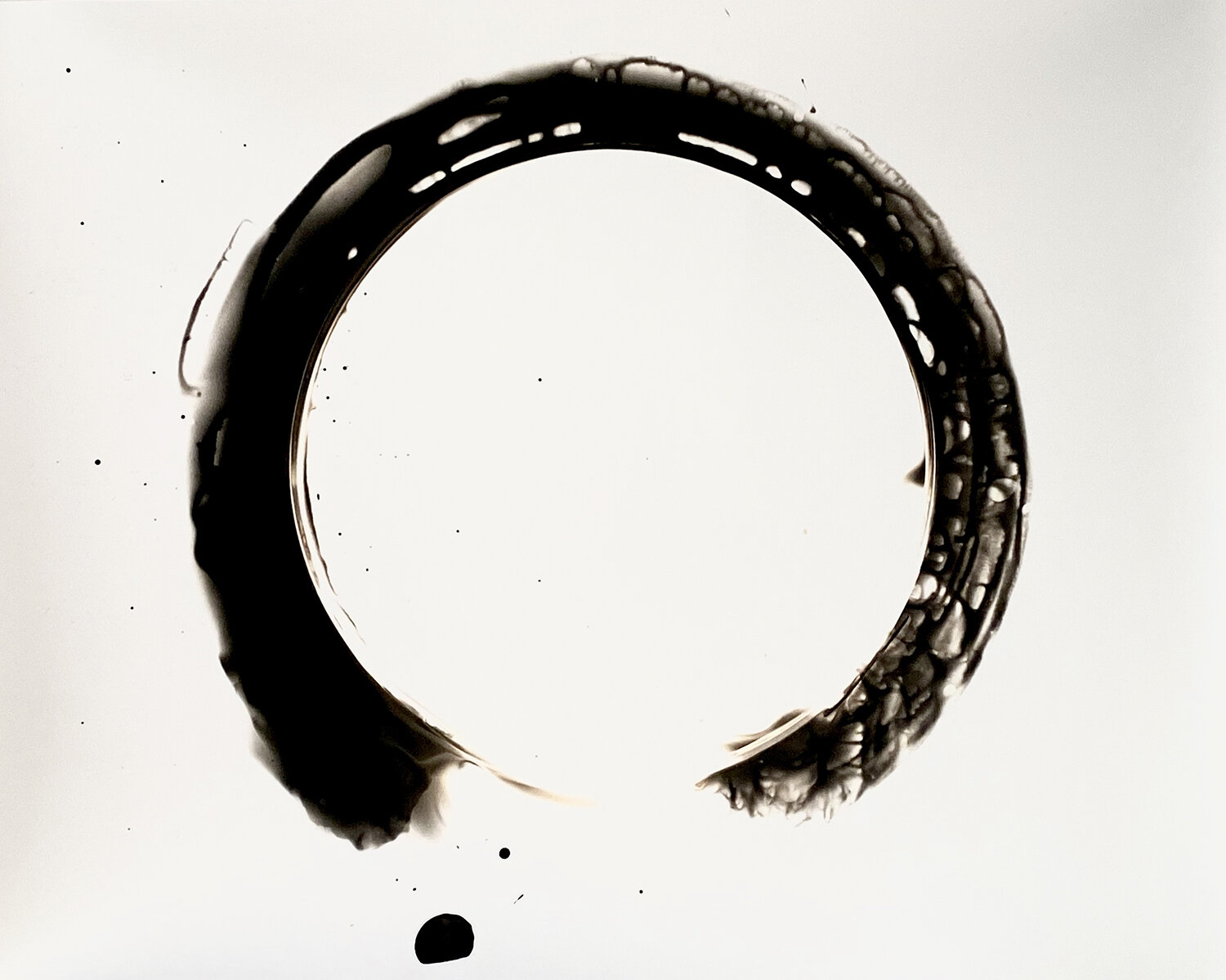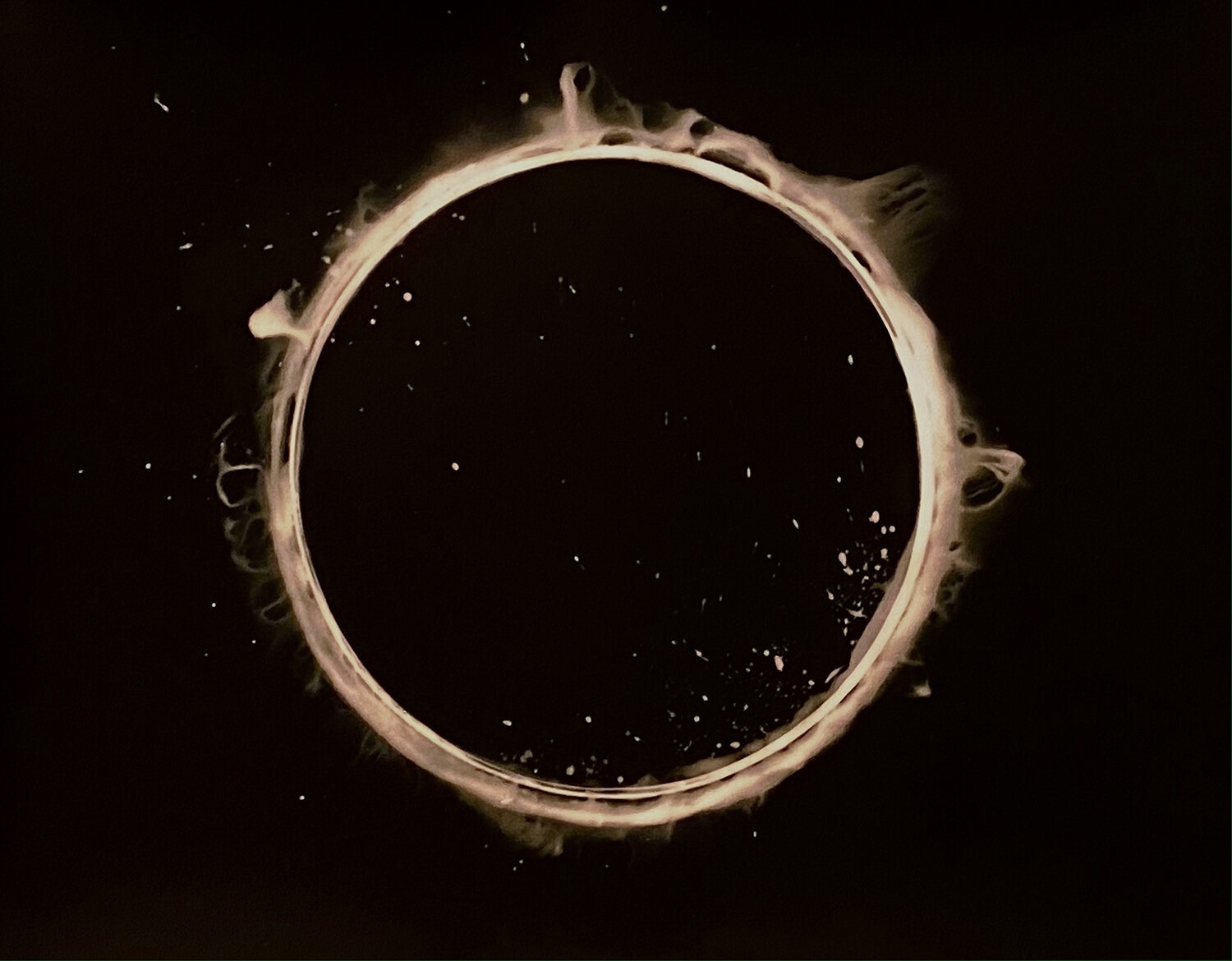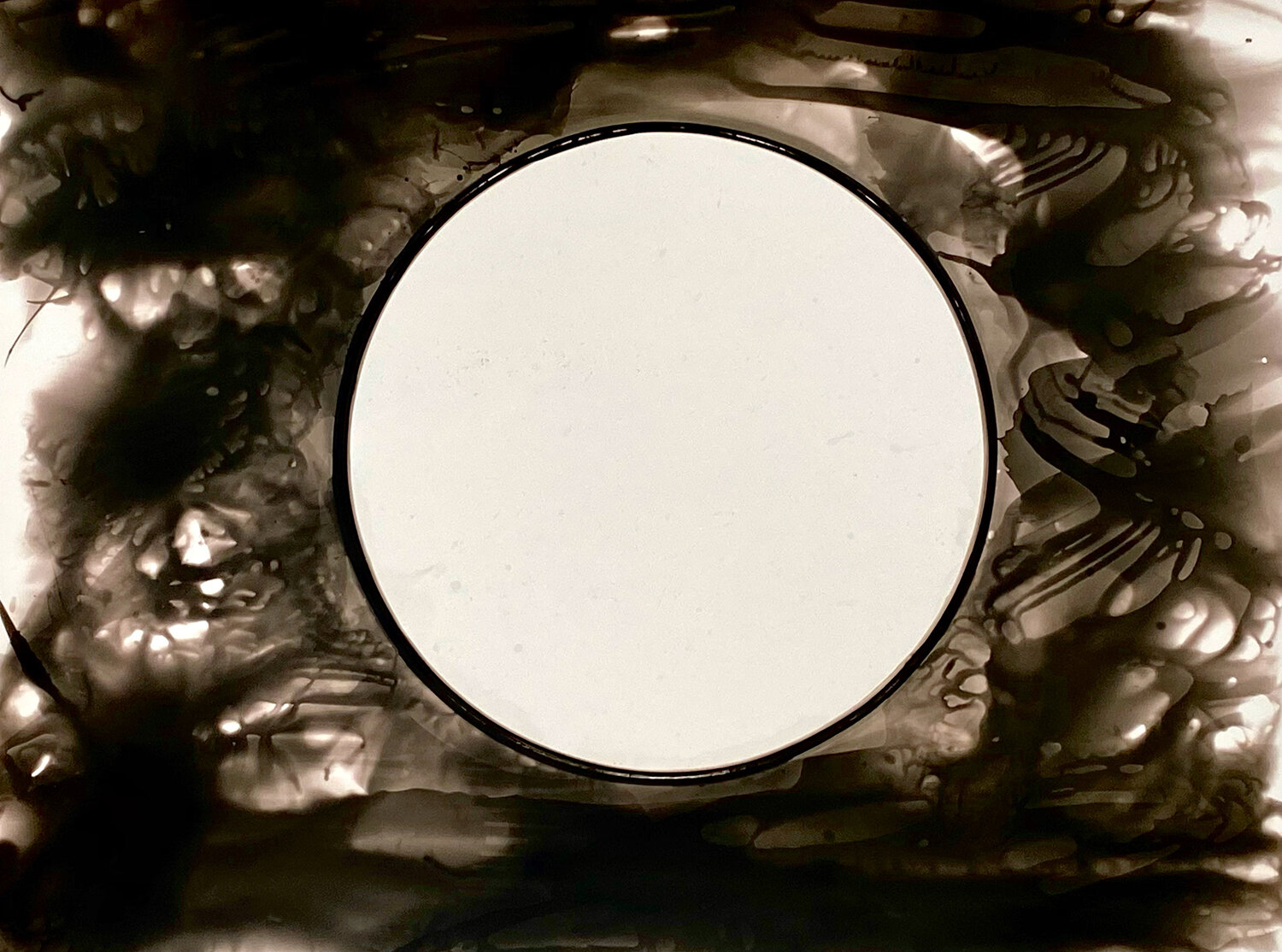This exploration and the resulting imagery have offered me the removal of life’s distractions, the time and focus to embark on a long-desired path to work cameraless.
Producing images solely through the actions of light and chemistry has long been a goal of mine, and, as I had hoped, held many rewards. I have waited for over the fifty years I have been photographing to attempt this and, as you might expect, it has been most challenging and enlightening.
The word “ensō” in Japanese refers to a circle that is hand drawn, often in one single brushstroke movement and one single breath. The ensō circle can be open or closed, representing either “complete” or “openness.” It also symbolizes the complete cycle of life, birth, death, and rebirth. The ensō can also express our totality of being. It is the direct expression of this moment-as-it-is. It is believed that the character of the artist is fully exposed in the way their ensō is drawn.
Ensō circles can range in shape from perfectly symmetrical to totally irregular, with brushstrokes either thin and delicate or broad and massive. I have been practicing drawing ensō daily in the darkroom. Using the tools of the Zen calligrapher and the chemistry of the photographer, I have been exposing photographic paper and using various brush types brushing on chemistry under a dim safelight, sometimes using fixer, other times developer, at times both. My technique varies in realizing the image.
After a time of trying to create preconceived round circles, I reached a place where I tried to let the materials of brushes and chemistry create their own imagery. This required trust in the materials but more so in myself. Not sure “trust” is the right word, but possibly a calming of my inner chaos looking for peacefulness.
For me the closed circles represent a pre-destiny or completeness or a continuation of the life cycle. The open circles leave room for possibilities, unknown to me a less directed journey. Many of the images that appear on black reference the celestial, then exposing a circular shape with a template onto the photographic paper, then brushing detail on and around the form to achieve the desired effect. These images were also inspired by the study of astrophotography and eclipse imagery. They may be related to my experiences in Varanasi, India, where I learned about the belief of ending the cycle of reincarnation and moving to a higher world or a higher consciousness. The splatter imagery results from the study of Robert Motherwell’s prints and writing, where he talked about expressing the power of the ocean waves by crashing the brush to paper to replicate that sheer force and energy. The splatter of the ink achieved in his prints also apply to my using various concentrations of chemistry and larger brushes.
However, although technique is certainly a component of the art-making process, it is less important to the end results. What determines success or failure of a work requires technique to disappear and to speak quietly. That my ensō images are photographic in nature—a technique that may speak loudly to some—I consider no less ensō in nature, nor should my process distract from my end results.
In the case of making these drawings, I’ve often used the word “discipline” to refer to the inner practice necessary: mentally trying to get out of the way of preconceptions, letting go and trusting that I don’t need to plan or predict everything and that mostly the results will be OK. That said, as the photographer Ralph Steiner once humbled me, “I always keep a large garbage can in my darkroom.”
These photographs/photograms are to be considered “chemical calligraphy”: unique, split-toned gelatin silver prints. In every way they represent my state of mind at the moment the brush touches the paper. These works are truly a mirror, a visual representation of my inner or emotional self at the moment they were drawn, what Alfred Stieglitz referred to as “Equivalents.”


